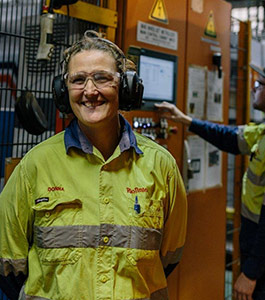In our last article, we examined what mental health is, how workplaces play a key role in individual worker mental health, as well as the legal and ethical responsibilities of the employer and employees in not adversely affecting mental health of workers. Which brings us to the next key topic in our series – what is workplace mental wellbeing? How does mental wellbeing fit into mental health? And how can workplaces affect mental wellbeing?
When we discuss positive mental wellbeing, we are referring more to good social and emotional wellbeing, which can differ depending on your culture and background. Generally, mental wellbeing is a state of overall wellbeing, whereby an individual enjoys life, is able to cope and bounce back from setbacks, set and fulfil goals, as well as build and maintain relationships1. Mental wellbeing can fluctuate depending on individual circumstances, returning to an equilibrium. Good social and emotional wellbeing at work is exhibited when workers are satisfied, productive, present and contribute to the mental wellbeing of their fellow workmates.2 This understanding will allow workplace leaders to identify the signs of wellbeing in workers, as well as whether their workplaces are creating the right environment for positive mental wellbeing or not.
What do mentally healthy working environments look like? They are places where:
- The culture is great – everyone feel safe, supported and valued, and look forward to turning up to work. People watch out for each other and make sure that everyone’s OK
- Workloads and expectations are managed – chronic stress, heavy workloads, uncertainty, poor communication and unrealistic deadlines are kept in check, workers are also supported with ways to build resilience during challenges
- Mental health is supported – mental health is talked about openly; workers know that a safe and open environment is available if they need to address any concerns. Employers are committed to assisting any workers experiencing mental illness through finding ways they can stay at work, or implement a return to work plan, and fully support recovery
- Diversity is paramount – employers take a zero tolerance approach to discriminatory behaviour at the workplace, ensuring that respect and inclusiveness is practised by everyone.3,4
A range of work-related factors, not properly managed, can create unhealthy workplaces:
- Workers are exposed to an unreasonable amount of stress (or further, chronic stress)
- Unreasonable time and workload demands, fatigue
- Poor organisational change management, poor communication and little to no consultation
- Workers feel insecure in their job, have low job control and low role clarity
- Poor relationships and toxic behaviour (discrimination, exclusion, isolation, bullying, verbal abuse and the like)
- Poor, unsafe work conditions
- Poor leadership practices.5
Without building and maintaining a healthy workplace, the above factors can have a significant impact on workers – their motivation, performance, productivity and presence. With prolonged exposure, workers can be exposed to a range of physical and mental illnesses, even workplace accidents.
Understanding individual social and emotional wellbeing, as well as the signs of mental wellbeing in the workplace, will provide leaders and insight into their workplace environment. Examining mentally healthy and unhealthy workplace factors will allow businesses to identify risks to worker mental wellbeing, as well as implement risk controls and improvements to processes, practices and management.
Our next article in the series will examine how leaders can pinpoint areas that potentially create a risk to worker mental wellbeing, followed by improvements to the workplace environment in order to create positive mental wellbeing for their workers.
1 https://everymind.org.au/mental-health/understanding-mental-health/understanding-mental-health-and-wellbeing
2 ibid
3 https://www.headsup.org.au/healthy-workplaces/what-is-a-mentally-workplace
4 https://www.blackdoginstitute.org.au/resources-support/wellbeing/workplace-wellbeing/
5 https://www.worksafe.vic.gov.au/mental-health-safety-basics.





